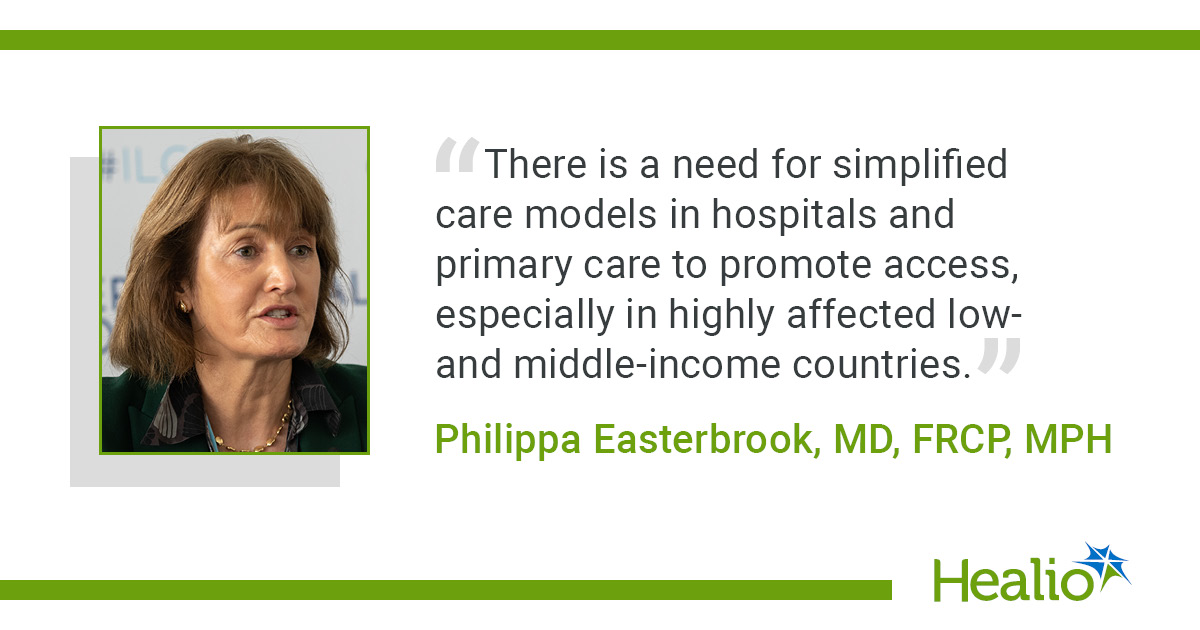September 03, 2025
3 min read
Key takeaways:
- Primary care and comanaged care models had significantly lower treatment assessment and initiation rates than hospital-based specialist care.
- Patients who received antivirals had the highest retention in care.
Attrition exists at all steps of the care cascade for chronic hepatitis B virus infection, highlighting the need for simple decentralized, integrated care models, according to research published in The Lancet Gastroenterology & Hepatology.
Retention in care was particularly low among individuals who were not yet receiving antiviral therapy, researchers noted.

Data were derived from Stockdale AJ, et al. Lancet Gastroenterol Hepatol. 2025;doi:10.1016/S2468-1253(25)00163-3.
“This meta-analysis has important policy implications for how to develop and deliver effective chronic hepatitis B testing and treatment services needed to achieve the 2030 global elimination targets,” senior study author Philippa Easterbrook, MD, FRCP, MPH, professor in the faculty of medicine at Imperial College London and former senior scientist in the WHO department of global HIV, hepatitis and sexually transmitted infections, told Healio.
“Chronic hepatitis B is a major cause of cirrhosis and liver cancer globally,” she added. “Yet, in 2022, only 13% of people with chronic HBV had been diagnosed, and just 3% treated.”
Easterbrook led the 2024 WHO guidelines on the management of HBV that are widely considered a game-changer in HBV care. They include expansion and simplification of treatment criteria for adults and adolescents, expanded eligibility for antiviral prophylaxis among pregnant women to prevent mother-to-child transmission, and improvements in diagnosis through point-of-care HBV viral load and reflex viral load testing.
Alongside implementing these recommendations to improve diagnosis, linkage to care and treatment, Easterbrook noted “there is a need for simplified care models in hospitals and primary care to promote access, especially in highly affected low- and middle-income countries.”
In a systematic review and meta-analysis, Easterbrook and colleagues searched PubMed, Embase and Scopus for observational and interventional studies published between May 1, 2013, and July 15, 2024, that reported outcomes for chronic HBV care across different service delivery models.
Care cascade outcomes included treatment eligibility assessment, initiation of antiviral therapy, retention in care and viral suppression.
The researchers assessed outcomes across different care models, including hospital-based specialist care, primary/specialist comanaged care, community screening with active and passive linkage to care, primary care and integrated care with HIV or other chronic disease clinics.
Of 4,883 studies identified, the researchers analyzed 106, which included 110 cohorts from 50 countries, nearly half (41%) of which were low- and middle-income.
Results showed that hospital-based specialist models had the highest proportion of patients who had an initial treatment eligibility assessment (73.9%) compared with comanaged care (63.1%) and primary care (50.4%), as well as the highest proportion who initiated treatment (78.1% vs. 67.2% and 49.3%).
Under hospital-based specialist care, 87.7% (95% CI, 79.9%-92.8%) of patients who received antiviral therapy were retained in care after a year compared with 47.2% (95% CI, 22.2%-73.6%) of patients who did not receive antivirals (RR = 1.72; 95% CI, 1.16-2.54).
HBV DNA viral suppression also was highest under hospital-based specialist care (73.1%; 95% CI, 64.3%-80.4%) at a median of 12 months.
“Community screening with active linkage achieved high rates of treatment initiation for eligible patients but lacked long-term retention data,” Easterbrook said. “Passive linkage following community testing and postpartum referral from antenatal care had the lowest rates of linkage to hepatitis B treatment assessment.”
She noted that in the 2024 WHO HBV guidelines there was “insufficient evidence” to support formal recommendations for decentralization of care away from hospital-based clinics to primary care, or for “task-sharing” or delegation of care to nonspecialists. This contrasts with HIV and hepatitis C, for which care is routinely delivered at lower-level facilities by nurses and nonspecialist doctors.
“Instead, the new guidelines adopted some key good-practice principles to promote access and delivery of high-quality health services for chronic HBV,” Easterbrook said. “These include strategies to promote uptake of testing and linkage to care, long-term adherence to antiviral therapy, retention in care, delivery of decentralized services by nonspecialists at lower-level health facilities such as primary health care or HIV clinics and integrated with other services to increase the efficiency and reach of hepatitis services, and community engagement and peer support.”
References:
For more information:
Philippa Easterbrook, MD, FRCP, MPH, can be reached at p.easterbrook@imperial.ac.uk.









